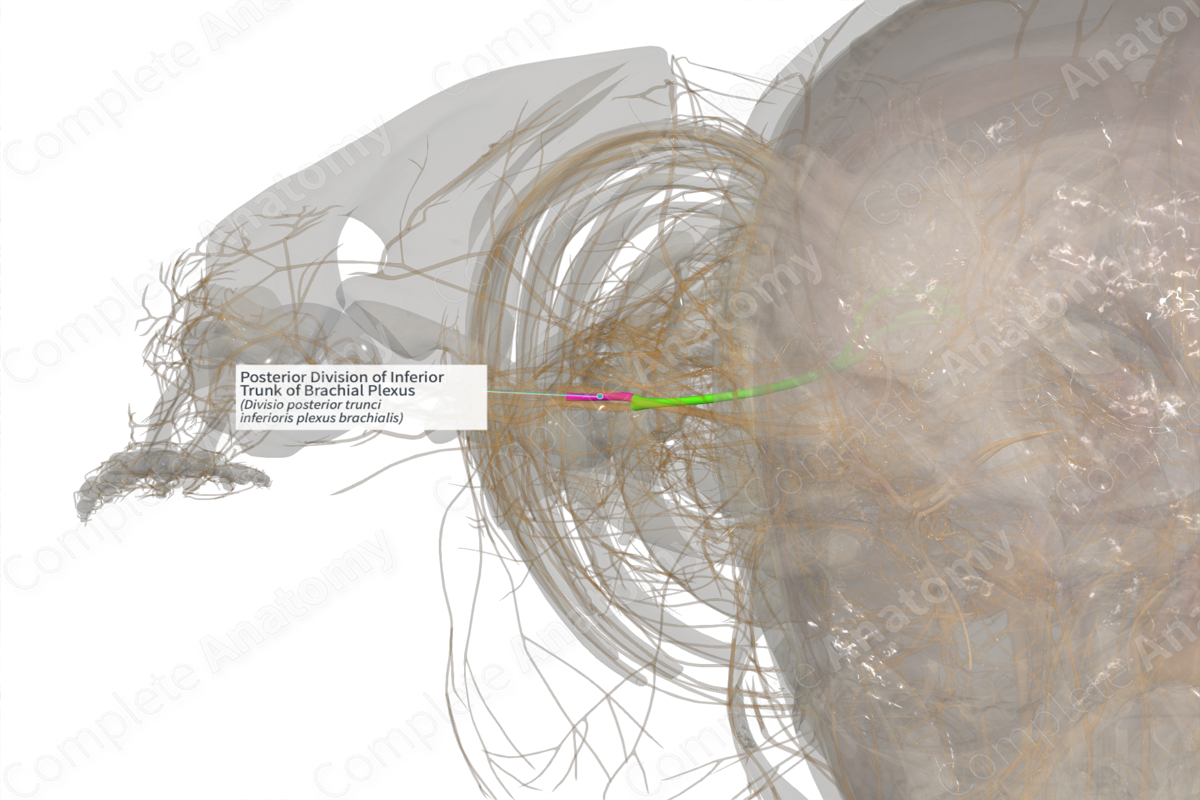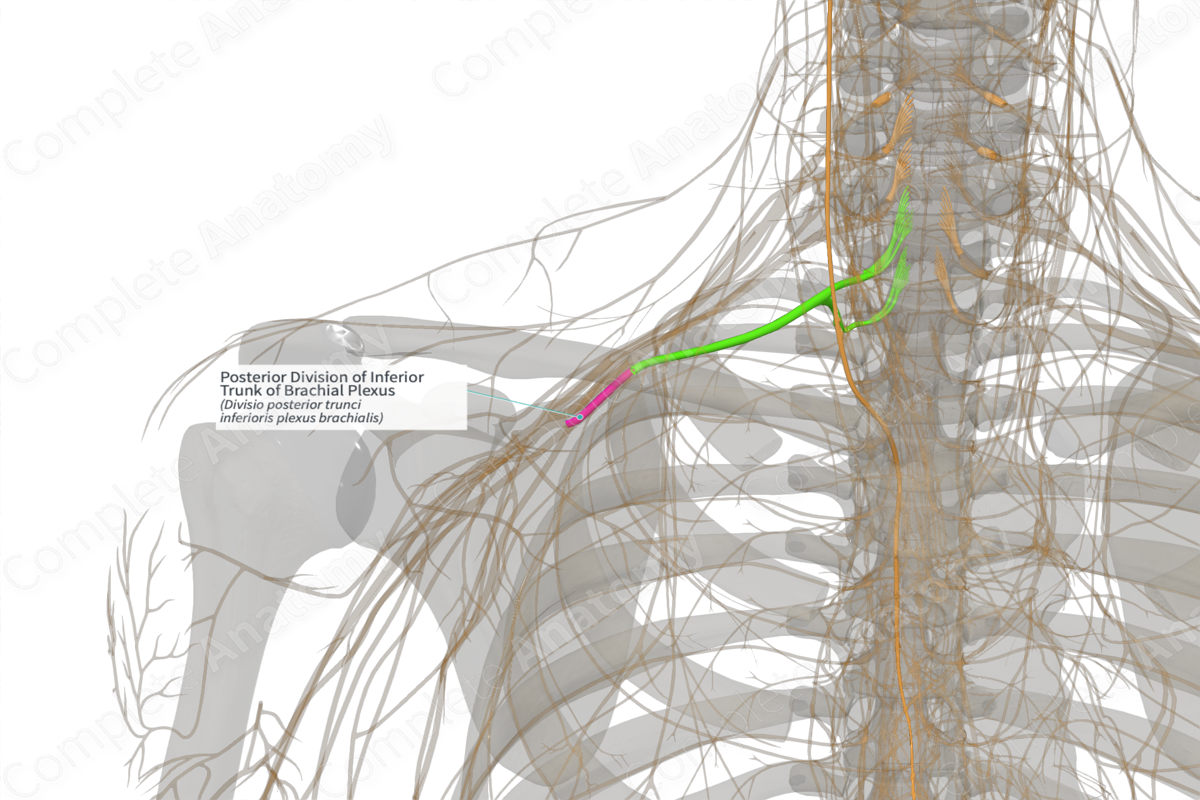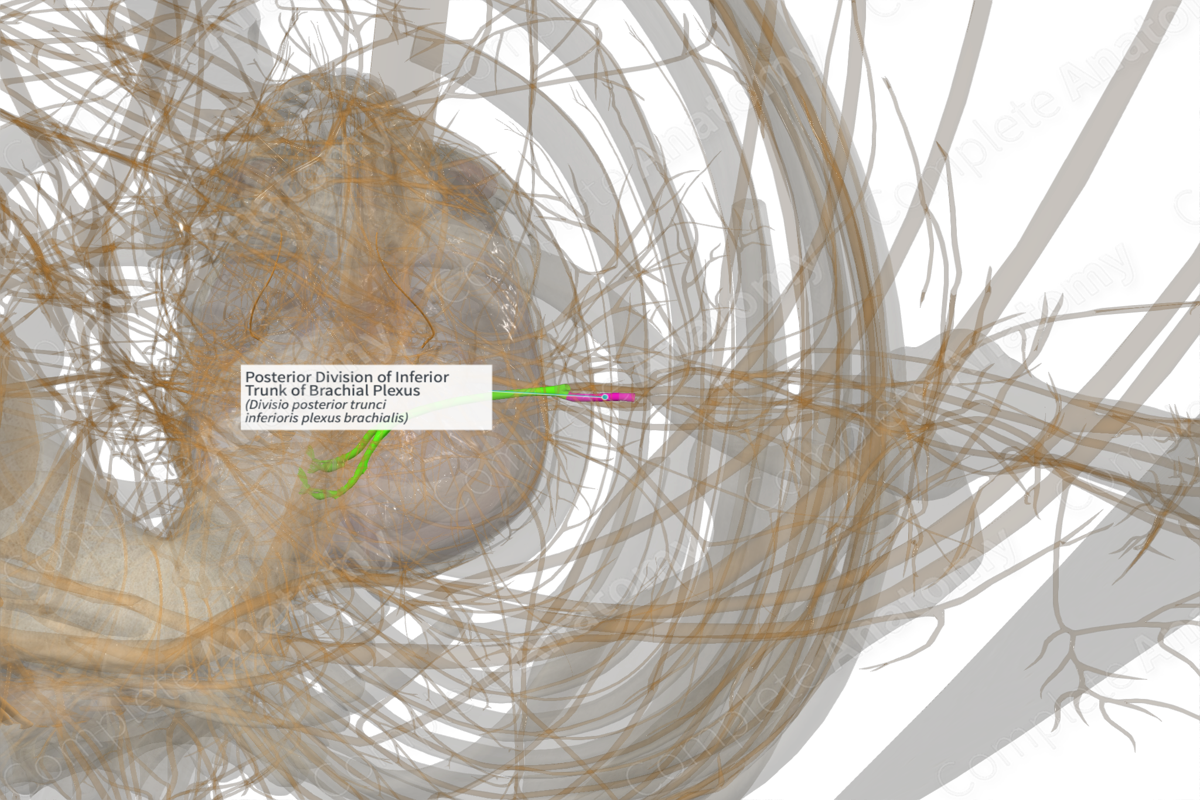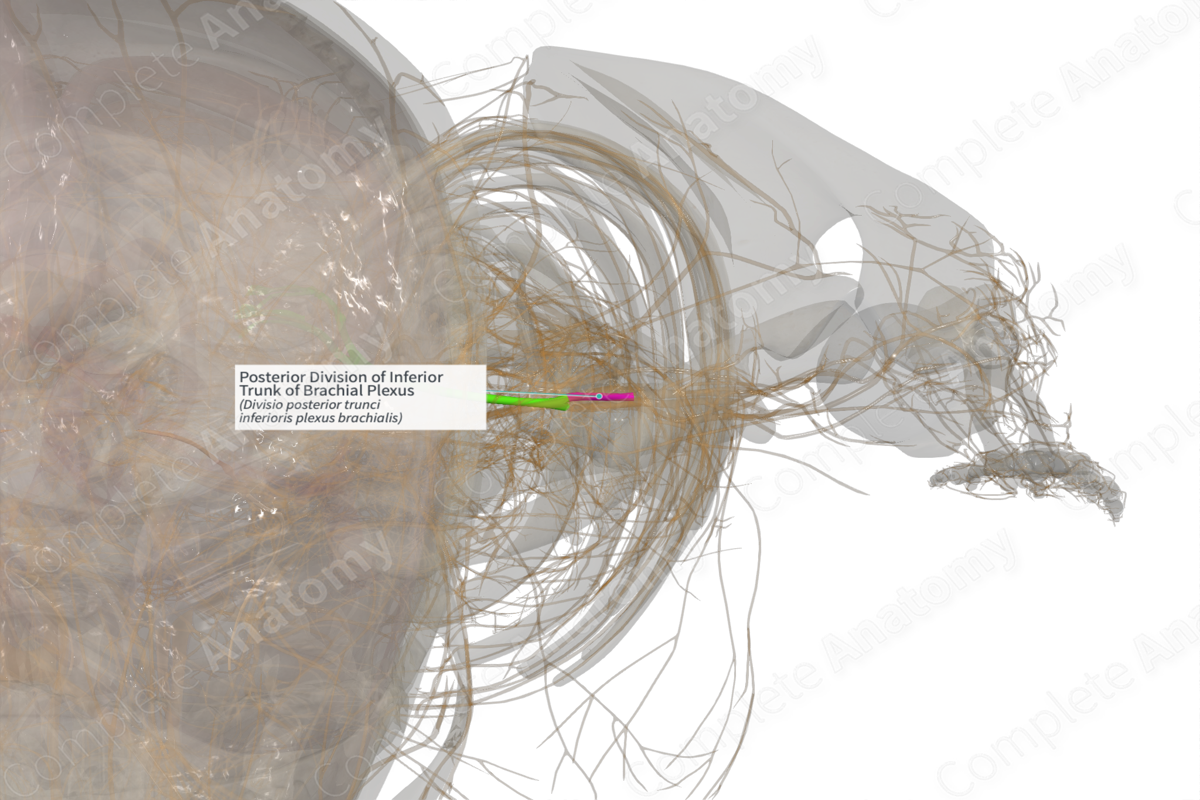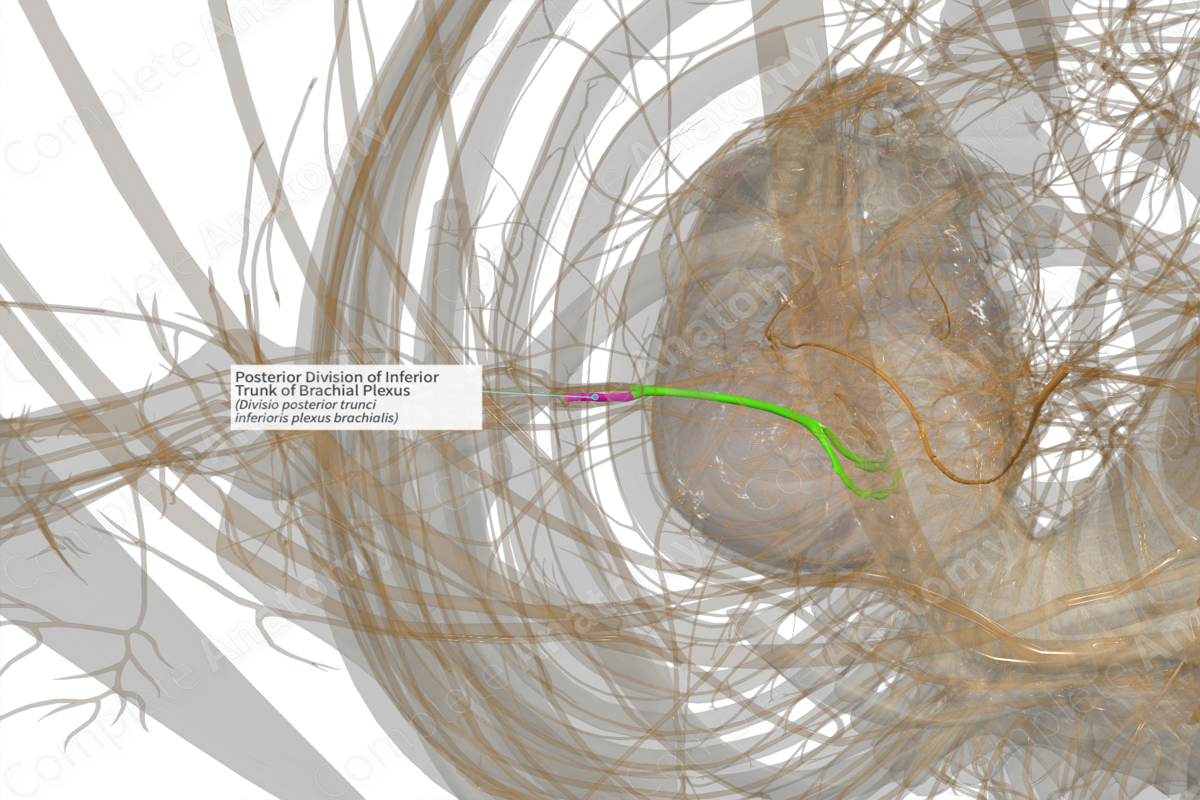
Posterior Division of Inferior Trunk of Brachial Plexus (Right)
Divisio posterior trunci inferioris plexus brachialis
Read moreQuick Facts
Origin: Inferior trunk of the brachial plexus.
Course: From posterior to the mid-clavicle, inferolaterally to a position posterior to the first segment of the axillary artery.
Branches: Contributes to the posterior cord which in turn gives rise to five nerves.
Supply: Sensory and motor innervation. Supplies sensory innervation for the skin of the posterolateral surface of the hand, and the posterior and lateral skin of the arm and forearm. Motor innervation is to the latissimus dorsi, and muscles of the posterior compartment of the arm and forearm.
Related parts of the anatomy
Origin
The origin of the posterior division of the inferior trunk is from the inferior trunk itself. This occurs when the trunk bifurcates into anterior and posterior divisions. It carries fibers from the C8 and T1 spinal segments.
Course
The posterior division of the inferior trunk forms on the border of the posterior triangle and the axilla, roughly posterior to the mid-clavicle. It runs inferolaterally, assuming a position posterior to the first segment of the axillary artery.
The divisions of the brachial plexus run within the prevertebral fascia or its inferior extension, the axillary sheath.
Branches
The posterior division of the superior trunk itself has no branches as it generally does not give rise to any nerves. However, it merges with the posterior divisions of the superior and middle trunks to form the posterior cord, and contributes to the following nerves:
—thoracodorsal nerve;
—radial nerve.
The posterior division of the inferior trunk merges to form the posterior cord, but it gives no contribution to the upper subscapular, lower subscapular, and axillary nerves.
Supplied Structures
The posterior division of the inferior trunk supplies some of the structures innervated by the posterior cord. This includes posterior and lateral surfaces of the arm forearm, and hand (sensory), the latissimus dorsi and the muscles of the posterior compartment of the arm and forearm (motor). Broken down by nerve, the structures supplied by the posterior division of the inferior trunk are:
—thoracodorsal nerve supplies motor innervation of the latissimus dorsi muscle;
—radial nerve supplies sensory to skin of the posterolateral arm, posterior forearm, and posterolateral hand and motor innervation to the muscles of the posterior compartment of the arm and forearm.
Learn more about this topic from other Elsevier products
Brachial Plexus

Neonatal brachial plexus palsy (NBPP) can be defined as a flaccid paresis of an upper extremity due to traumatic stretching of the brachial plexus, with the passive range of motion greater than the active.

